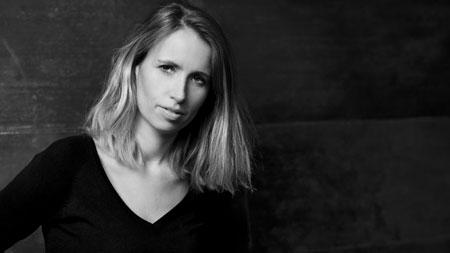Discussing conditions for children and children's films, Dorte Høeg Brask is serious and insistent, interrupting herself at one point to muse, "Does that sound ‘politically correct'?" She decides it doesn't matter: As grownups, we have to guard the preciously short time kids have to be kids these days. Which does not mean sheltering them from harsh images of reality. Because reality can be harsh, and one of the most important things a documentary for children can do is foster identification: Somebody out there is going through what I'm going through!
"Documentaries can mirror real life on a one-to-one scale. They can create identification and make kids feel they are not alone."
Children Are Busy
What's it like to be a kid today?
"I think children are busy," Høeg Brask says. "Busy with school, after-school programmes, homework, sports, TV, the Internet and computer games – and always having to perform. I think being a child in our part of the world is stressful.
"Childhood isn't harder today, but it is shorter. Way too many children spend their lives commuting between parents and all the things they have to do. The time available for carefree play without the demand to perform has shrunk, as I see it.
"Children become tweens before we have time to blink. The Internet and media, with commercials and talent shows on all channels, make them self-conscious at a way too early age about how they look, what they can or cannot do – and about their sex. They are confronted with images of assault, sex and violence. And we can't protect them against it, but we can put the images into context, so they can understand them. Children have seen almost everything and they can handle more than we think.
"There's no getting rid of these images, either – or the norms of behaviour and appearance – but we can give kids some other images of conflict material in their lives. Images that are about more than just the importance of being attractive, images about things like being scared of the dark or how to say goodbye to a friend."
Children Are Different
As a commissioner, Høeg Brask can, and does, support any genre, but this graduate of the National Film School's documentary programme is particularly dedicated to developing stories for children and young people.
"Documentaries can mirror real life on a one-to-one scale. They can create identification and make kids feel they are not alone. Through these stories they can see how other kids live.
"Children are so different, and so are their lives. Because most people working in the film industry live in Copenhagen, we are seeing a lot of films that mirror their lives and environment.
"But there are children out there whom we do not reach and who do not feel recognised. The kind of kids we rarely see. Kids living on the fringes. Kids who look different. Kids who don't fit in. I'd like to see some films about them."
Overall, Høeg Brask would like to see more quality documentary projects for children and teens. "Documentaries for kids are the lowest level of the hierarchy no one wants to be associated with," she says. But she can't see why, and she won't accept it. So what is she going to do about it?
"I'm working on several levels. Talking with filmmakers: How are they doing? Where are they headed? I try to send them out to meet kids, in the schoolyard or out in the country. It makes a difference where you live and what view you wake up to in the morning. I'm in close dialogue with TV stations about specific projects – and I'm trying to raise more private sponsorship funds for the area."
Reaching Your Audience
Høeg Brask has no plans to directly encourage filmmakers to work on different media platforms. She hopes filmmakers will come up with ideas on their own, stories that naturally outgrow individual films and spread to other platforms. Because that's where the kids are: on the mobile and online. Her main criterion for success, when her time as children's short and documentary film commissioner ends in a few years, is, Have the films reached their audience? Have they been seen and used?
"Also, we mustn't forget that childhood, however brief it may be, is a pocket of time whose driving forces are play, desire and fantasy – and children's films should always reflect that, too".
